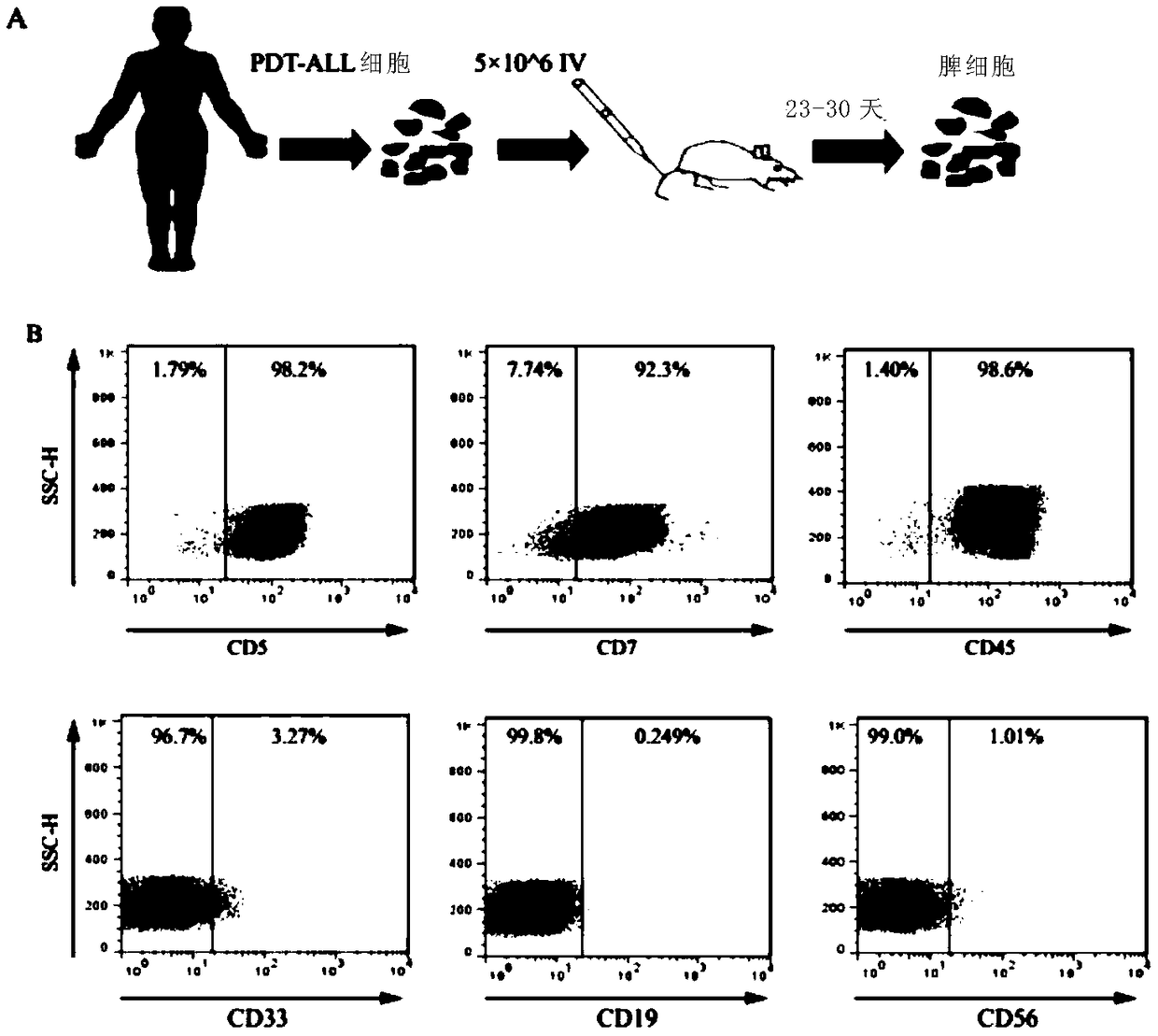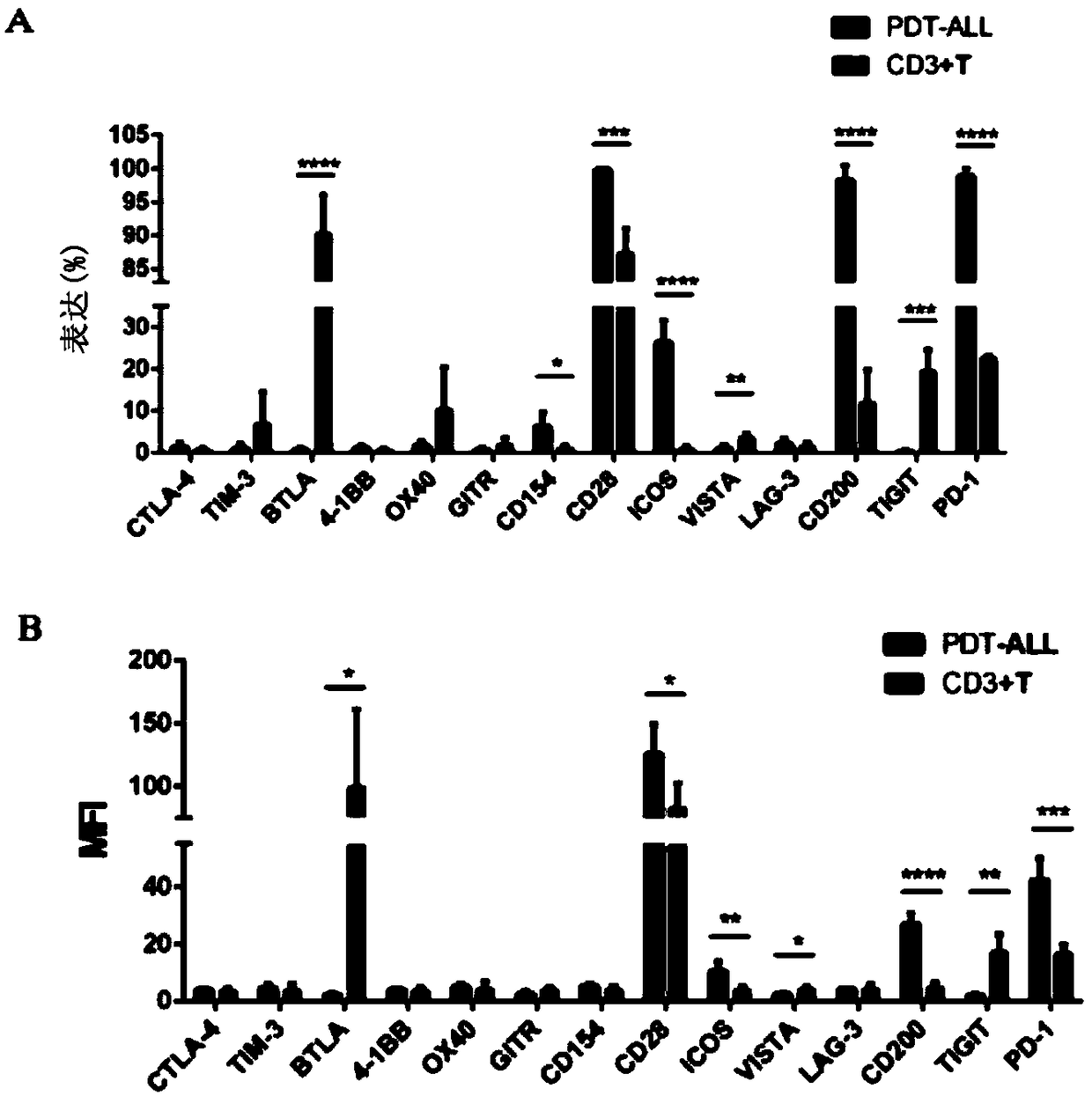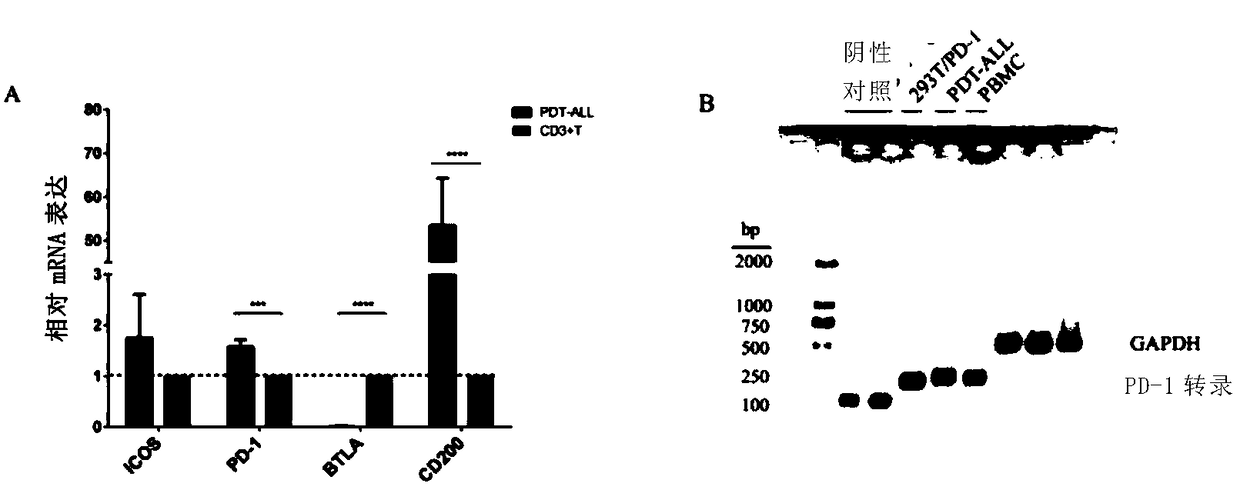Application of PD1 molecule inhibitor in T lymphocytic leukemia treatment
An inhibitor, PD-1 technology, applied in the biological field, can solve problems such as exacerbation and drug-resistant diseases
- Summary
- Abstract
- Description
- Claims
- Application Information
AI Technical Summary
Problems solved by technology
Method used
Image
Examples
Embodiment 1
[0080] Construction and characterization of a T-ALL xenograft model from a leukemia patient
[0081] Because primary T-ALL cells cannot grow in vitro, in order to expand T-ALL cells for subsequent experiments, a leukemia xenograft model was constructed on B-B-NDG mice. After injecting patient-derived T-ALL cells into the tail vein (5×10 6 cells, 6 mice), harvested mouse spleen cells ( figure 1 A). In order to verify that the spleen cells obtained from the mice are T-ALL cells, combined with the immunophenotype of the patient's primary T-ALL described above, cell surface marker staining and intracellular staining were performed by flow cytometry. Such as figure 1 As shown in B, the cells are negative for human CD33, CD19, and CD56, which excludes the possibility that the tumor cells are derived from myeloid cells, B cells, and NK cells. The cells express more than 90% of the surface markers human CD5 and CD7. Human cCD3 was also highly expressed, so it was determined that t...
Embodiment 2
[0083] Differences in the expression of immune checkpoints on T-ALL cells and healthy human T cells
[0084] Flow cytometry analysis was performed on T-ALL cells and peripheral blood T cells from several healthy people to detect the expression differences of various immune checkpoints. Depend on figure 2 A shows that, compared with healthy human CD3+ T cells, the expressions of PD-1, CD28, and CD200 on T-ALL cells are significantly up-regulated, while the expression of BTLA is significantly down-regulated, the expression of ICOS is slightly increased, and the expression of TIGIT is slightly reduced. When the expression of these immune checkpoints was analyzed by MFI, the results were also consistent ( figure 2 B).
Embodiment 3
[0086] Differences in the mRNA expression of ICOS, PD-1, BTLA, and CD200 on T-ALL cells and healthy human T cells
[0087] The above results indicated that ICOS, PD-1, BTLA, and CD200 were abnormally expressed on T-ALL cells in this case. Next, QPCR and RT-PCR were used to further verify their expression at the mRNA level. Such as image 3 As shown in A, compared with healthy people, the mRNA expression levels of ICOS and PD-1 on T-ALL cells are higher, and the difference is statistically significant. The expression of CD200 at the mRNA level is greatly increased, while BTLA is Expression at the mRNA level is almost absent. At the same time, a 293T cell line with stable expression of PD-1 was constructed as a positive control, and the transcripts of PD-1 on T-ALL and normal human PBMC were detected by RT-PCR ( image 3 B). Therefore, ICOS, PD-1, and CD200 are expressed on patient-derived T-ALL cells.
PUM
 Login to View More
Login to View More Abstract
Description
Claims
Application Information
 Login to View More
Login to View More - R&D
- Intellectual Property
- Life Sciences
- Materials
- Tech Scout
- Unparalleled Data Quality
- Higher Quality Content
- 60% Fewer Hallucinations
Browse by: Latest US Patents, China's latest patents, Technical Efficacy Thesaurus, Application Domain, Technology Topic, Popular Technical Reports.
© 2025 PatSnap. All rights reserved.Legal|Privacy policy|Modern Slavery Act Transparency Statement|Sitemap|About US| Contact US: help@patsnap.com



